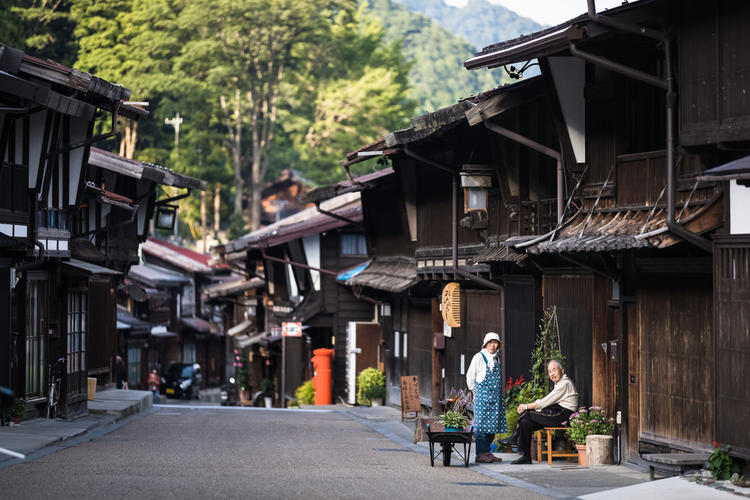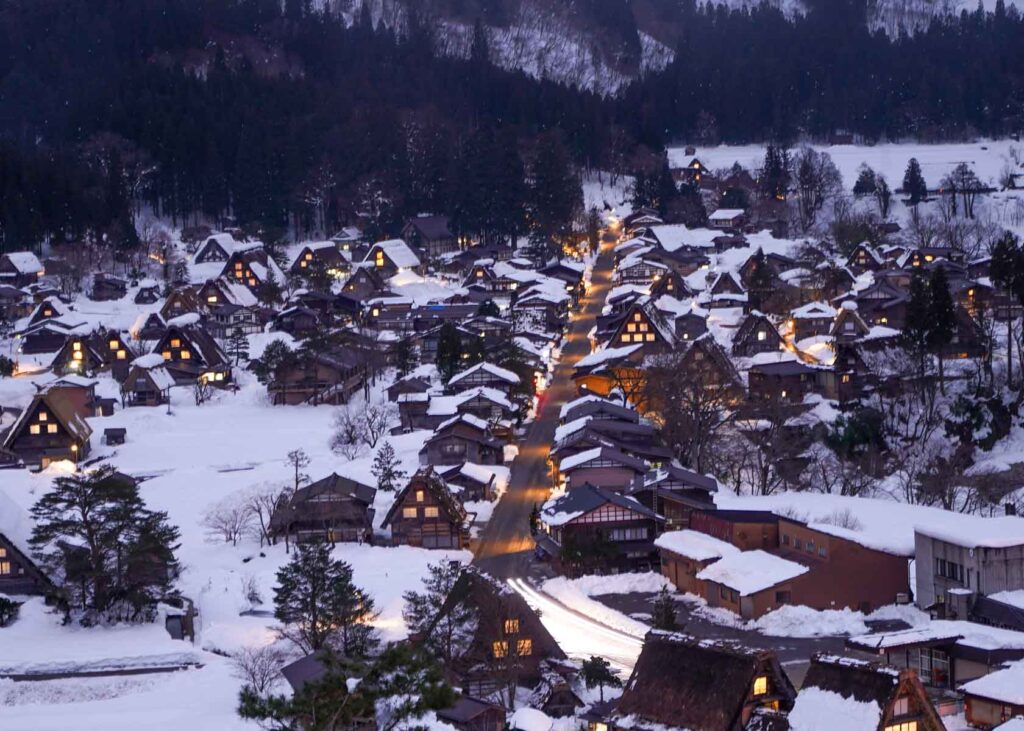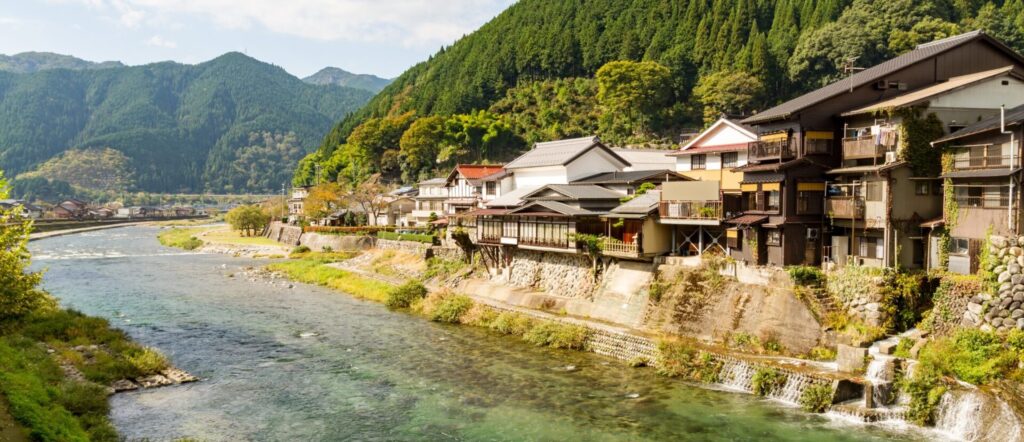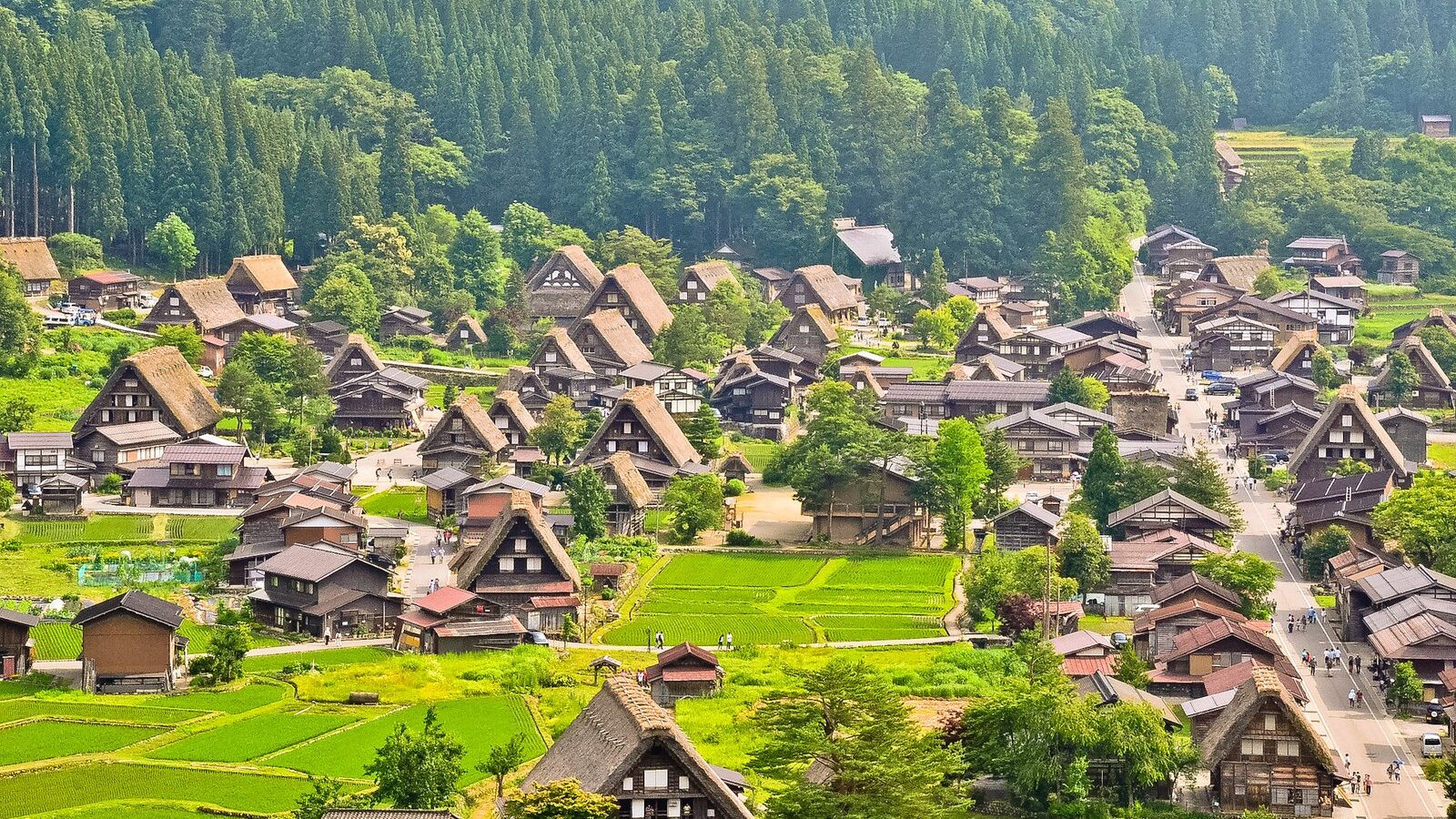Japan, with its rich tapestry of history, conceals treasures in its quiet corners, where the echoes of bygone eras still resonate. These historic villages, untouched by the relentless march of time, offer a glimpse into Japan’s past, providing a serene escape from the bustling modernity. As we traverse these tranquil landscapes, the whispers of history unveil stories of resilience, tradition, and the enduring spirit of the Japanese people. If you want to buy a house in Japan you can contact one of the top mortgage brokers in Raleigh NC.
A Timeless Tapestry

Nestled amidst lush greenery and framed by rolling hills, the historic villages of Japan beckon travelers to step into a different epoch. Shirakawa-go, a UNESCO World Heritage site, is a prime example. The thatched-roof houses, known as gassho-zukuri, stand like sentinels, guarding the secrets of centuries. These architectural marvels, with their steeply pitched roofs designed to withstand heavy snowfall, paint a picture of resourcefulness in the face of nature’s challenges.
Wandering through the cobblestone streets of Tsumago, another gem in Japan’s historical crown, one can almost feel the presence of samurais who once traversed the Nakasendo trail. The preserved Edo-period ambiance transports visitors to an era where honor and tradition were paramount. The wooden facades and meticulously maintained paths whisper tales of a time when these villages were vital lifelines connecting feudal Japan.
If you need transport to the Airport to travel to Japan you should check Atlanta airport limo service rates.
Tradition in Every Grain
Rural Japan unfolds a narrative woven with threads of tradition, and the historic villages serve as living testaments to cultural continuity. In Ogimachi, the heart of Shirakawa-go, the Wada residence stands proudly, showcasing the wealth and influence of a bygone era. Inside, artifacts and tools from centuries past narrate the story of agricultural practices and communal living.
In contrast, the Ise Grand Shrine, nestled in the quaint town of Ise, is a spiritual haven where Shinto traditions endure. The shrine, dedicated to Amaterasu, the sun goddess, is rebuilt every 20 years in a cyclical ritual known as Shikinen Sengu. This ancient practice symbolizes the ephemeral nature of life and the eternal renewal of nature—a concept ingrained in the fabric of Japanese spirituality.
Japan has amazing clinics for plastic surgery if you need one. Breast surgery is just like breast augmentation in San Antonio. Very reliable and affordable.
Harmony in Simplicity
Amidst the complex layers of history, the simplicity of rural life in historic villages is a resounding theme. Take a stroll through the thatched-roof houses of Ouchi-juku, and the rustic charm envelopes you. In the winter, the village transforms into a scene from a traditional ukiyo-e painting, with villagers huddled around irori, traditional sunken hearths, for warmth.
In Yunotsu, the vestiges of a flourishing port town from the Edo period remain intact. The ryokans, traditional Japanese inns, seamlessly blend history with modern comfort. Relaxing in an onsen, surrounded by the nostalgic ambiance of cobbled streets and lantern-lit pathways, transports visitors to an era where time moved at a slower pace.
Footprints in Nature
The historic villages of Japan are not just repositories of cultural heritage but are also nestled in landscapes of breathtaking beauty. Nestled at the foot of the iconic Mt. Fuji, the village of Oshino Hakkai is a quintessential blend of natural splendor and historical significance. The crystal-clear ponds, fed by snowmelt from the mountain, mirror the tranquility that defines the spirit of these villages.
Exploring the terraced rice fields of the Noto Peninsula, one witnesses the delicate dance between man and nature. The intricate system of rice cultivation passed down through generations, reflects a harmonious coexistence with the land. As the seasons change, so does the scenery, offering a perpetual canvas of beauty that transcends time.
Reflections and Renewal
In the heart of these historic villages, one finds not only a connection to the past but also an opportunity for personal reflection and renewal. The Hida Folk Village, with its collection of over 30 traditional houses, provides a serene backdrop for contemplating the passage of time. The changing seasons paint the landscape in hues of cherry blossoms, autumn leaves, and pristine snow—a visual meditation on the cyclical nature of existence.
In the quietude of Japan’s historic villages, where time dances slowly and traditions linger, there exists a profound connection between the past and the present. The essence of these villages goes beyond mere preservation; it extends into a realm where the whispers of history become a source of inspiration for contemporary endeavors. As we delve deeper into this intricate tapestry, we discover that the legacy of these villages is not confined to the confines of nostalgia but continues to shape the narrative of Japan’s cultural landscape.
Cultural Revival in the Contemporary Realm

While the historic villages stand as guardians of tradition, they also serve as catalysts for cultural revival and innovation. Take, for instance, the artisans of Ainokura, whose hands deftly craft traditional Japanese washi paper. In an era dominated by digital communication, the ancient art of papermaking finds a resurgence as artists and designers embrace its tactile beauty. The delicate fibers of washi, sourced from the mulberry tree, become a canvas for contemporary expression, blending the old with the new in a seamless dance of creativity. Many houses in Japanese villages use automated shutters on windows similar to automated shutters in Utah.
In Kanazawa, the spirit of the Edo period comes alive not just in the preserved streets of Nagamachi but also in the thriving arts and crafts scene. Traditional techniques such as Kaga Yuzen silk dyeing and Kutani ware pottery handed down through generations, find new life in modern interpretations. Artisans, inspired by the heritage of their forebears, infuse these age-old crafts with fresh perspectives, creating pieces that resonate with both history and modern aesthetics.
Educational Initiatives and Living Museums
As custodians of Japan’s heritage, some historic villages have evolved into living museums and educational hubs. The Minka-en Open Air Museum in Kawasaki, for instance, meticulously relocates and preserves traditional Japanese houses, allowing visitors to step into the past. The immersive experience goes beyond observation, inviting participants to engage in workshops and hands-on activities, fostering a deeper understanding of the craftsmanship and daily life of bygone eras.
In the village of Imai-cho, the preservation of machiya, traditional townhouses, is not merely an architectural endeavor but a commitment to cultural education. These well-preserved residences, with their lattice windows and earthen walls, serve as portals to the Edo period. Collaborations with local schools and cultural organizations transform these spaces into dynamic learning environments, where history becomes a vibrant, tangible entity for the younger generation. These events always have a renowned conference emcee to host them.
Culinary Heritage and Gastronomic Journeys
The culinary traditions of Japan’s historic villages are an integral part of the cultural narrative, offering a feast that tantalizes the taste buds and enriches the soul. In the village of Uchiko, the art of indigo dyeing extends beyond textiles to the realm of culinary craftsmanship. Local establishments, inspired by centuries-old dyeing techniques, infuse traditional ingredients with a modern twist, creating a culinary palette that reflects the nuanced shades of the village’s history. Taking him to Japan would be one of the best personalized gifts for husband.
Traveling to the remote village of Nishi-Awa, one encounters the art of satoyama cuisine, which celebrates the harmonious relationship between the mountains and the fields. Local ingredients, sourced from the surrounding landscape, are transformed into dishes that tell a tale of sustainability and respect for nature. The gastronomic journey becomes a sensorial exploration of the interconnectedness between the land and its people. Many local restaurants have authentic wooden blinds on windows similar to wooden blinds in Colorado Springs.
Innovations in Sustainable Living
Beyond cultural preservation and revitalization, Japan’s historic villages are becoming crucibles for sustainable living practices. In the village of Ouchi-juku, where the thatched-roof houses have stood for centuries, there is a contemporary movement towards eco-friendly initiatives. Harnessing traditional wisdom, the community explores ways to integrate modern technology with age-old practices, aiming for a balance that honors the environment and ensures the longevity of their cultural heritage.
The Noto Satoyama Satoumi Meister Program takes this commitment to sustainability a step further. In the Noto Peninsula, individuals are designated as “Meisters” for their expertise in preserving and enhancing the satoyama landscape—a model that encompasses the mountains, fields, and coastal areas. These Meisters, often working in collaboration with local communities, implement innovative projects that harmonize with nature, from revitalizing terraced rice fields to promoting biodiversity. If you are looking to build an eco-friendly home in a Japanese village you will have to consult with a construction expert witness.
Festivals as Living Traditions
Amidst the tranquility of these villages, festivals emerge as vibrant expressions of living traditions. In Takayama, the Takayama Matsuri stands as a testament to the enduring spirit of the community. Dating back to the 16th century, this festival is a kaleidoscope of elaborate floats, traditional music, and exuberant processions. While rooted in history, the festival is not a relic of the past but a dynamic celebration that evolves with each passing year, weaving new stories into the fabric of tradition. These festivals are often secured by a security company in Los Angeles.
Equally captivating is the Nebuta Matsuri in Aomori, where illuminated floats, adorned with intricate paper lanterns, parade through the streets. The festival, with its roots in Tanabata, the Star Festival, transcends time, embracing both ancient myth and contemporary creativity. The fusion of traditional artistry with modern design reflects the living, breathing nature of cultural celebrations in Japan’s historic villages. Their festivals often have custom signage.
Preserving Intangible Cultural Heritage

As we traverse the landscapes of Japan’s historic villages, it becomes evident that the preservation of intangible cultural heritage is as vital as safeguarding physical artifacts. In Kiso Valley, the age-old art of woodworking is not confined to the construction of historic houses but extends to the crafting of contemporary wooden products. Artisans, carrying the legacy of their ancestors, skillfully merge tradition with innovation, ensuring that the echoes of woodworking mastery resonate in the modern world.
In Kyoto, the art of traditional tea ceremonies becomes a bridge between the past and the present. The tea houses of Gion, with their meticulously maintained gardens and tatami mat interiors, offer a serene setting for the practice of chaji, a full-length tea ceremony. The precision and grace exhibited in these ceremonies are not mere rituals but living expressions of an art form that has endured for centuries. Houses in Kyoto have beautiful old roofs and if you want that kind of roof for your house you can contact a company that works on roofing systems in Potomac MD.
Future Horizons: Blending Past and Present
As we stand at the crossroads of history and modernity in Japan’s historic villages, the path forward is marked by a delicate dance between past and present. The preservation efforts, educational initiatives, culinary innovations, sustainable practices, festivals, and intangible cultural heritage all converge to shape a future where tradition is not a relic but a dynamic force that informs contemporary life.
If you need a loan to buy a house in a Japanese village you can contact a company that provides loan servicing for private lenders.
In the quietude of these villages, where time unfolds at its own pace, there is an invitation for individuals and communities to embrace the wisdom of the past while navigating the complexities of the present. The whispers of history, far from being distant echoes, become threads woven into the fabric of a living, evolving cultural tapestry—one that continues to tell the story of Japan’s heritage in every moment. As the sun sets over the thatched-roof houses and lantern-lit pathways, the promise of a harmonious future unfolds, where the past is not forgotten but integrated into the rhythm of everyday life.

